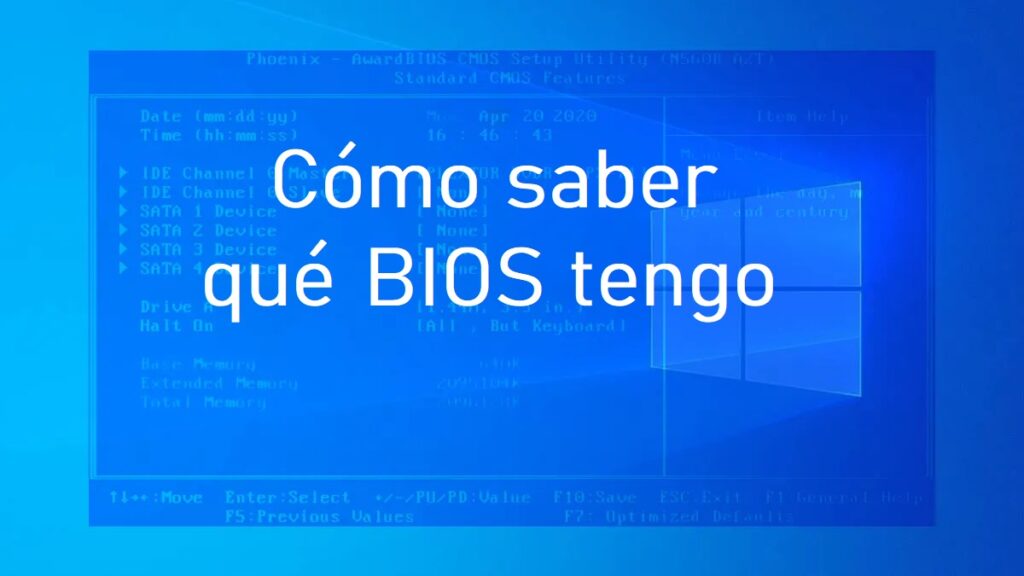
This is a question that, as computer users, we have all asked ourselves, or should ask ourselves: How do I know what BIOS I have? The answer is essential to face certain processes such as updating and other issues.
The term BIOS actually refers to the acronym for Basic Input Output System (basic input/output system). This is a firmware that is stored on the computer board, in a specific memory device. Unlike RAM memory, it does not disappear when you remove the PC, but rather starts automatically at each power on.
The main function of the BIOS is to tell the system where each program is located in main memory, especially the one that allows start the operating system. That is why it is so important that it works perfectly and without any problem.

Updating or modifying the BIOS is a complex process that is not within the reach of the average user, since its interface is quite complicated. Furthermore, any small mistake made in these processes can have fatal consequences for the operating system.
However, find out what is the BIOS of our computer it is relatively simple. This is how we can know it depending on the version of Windows that we use:
In Windows 11
We start with the most recent version of this operating system. How to know what BIOS I have? There are two methods of obtaining this information:
Access when you turn on the computer
It is possible to access the BIOS during the process of starting the computer, when the manufacturer's logo appears on the screen. At the bottom of the screen, the key or keys that must be pressed and at what time we must do it are usually indicated.
These keys are not always the same, although the most frequent are F2, Del, F4, or F8. On some occasions the keys appear on the screen briefly (for example, when the Fast Boot), without giving us time to see which one is correct. Fortunately, there are other ways to access the BIOS.
Access from Windows
It may be the easiest way to get into the BIOS. You just have to follow these steps:
- First you have to enter the Windows Start menu.
- Then you have to click on the button "Start".
- Then the known ones will appear on the screen Sleep, Restart, or Shutdown options. That's when you have to hold down the Shift key and then click "Restart".
In Windows 10
This is the most widespread version today among Windows users. This is how to know what BIOS I have if my computer has Windows 10 installed:
- First we write "System information" in the search box on the taskbar.
- In the list of results displayed, we click "System information".
- A window opens in which we will go to the column "Element". There you will find information about the version and date of the BIOS along with the name of the manufacturer.
On other versions of Windows
The way to get this information in the other versions of Windows is the same: using the Windows command console and following these steps:
- To start you have to open a Command Prompt window by simultaneously pressing the keys Windows + R.
- After this, the run window, where we write the command cmd.exe and click on "To accept".
- Once the Command Prompt window is open, we will type the following in it: wmic bios get smbiosbiosversion, after which we will press Enter.
- With this, the BIOS version of our computer reflected in the second line of results will appear.
How to know what BIOS I have on Mac?
In theory, on Mac computers there is no BIOS, although something quite similar. In this case, it is a very restricted firmware. Its inaccessibility is the guarantee that no one, except an expert technician, can enter and manipulate the operation of the device. So the access path that we indicate here is merely informative, we do not recommend using it if we are not very sure of what we are doing. These are the steps:
- The first thing to do is turn off your Mac completely and turn it back on after a few seconds.
- When the computer starts we must hold down the keys Command + Option + O + F.
- After a few seconds, some lines will be displayed on the screen in which to enter different commands to make modifications.